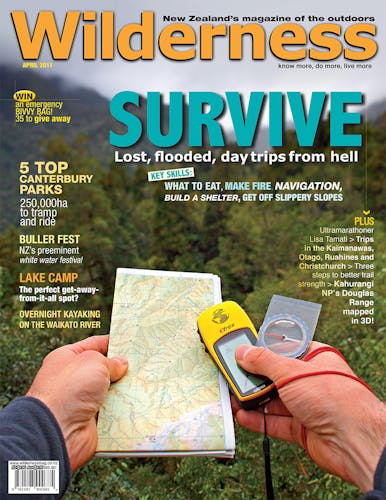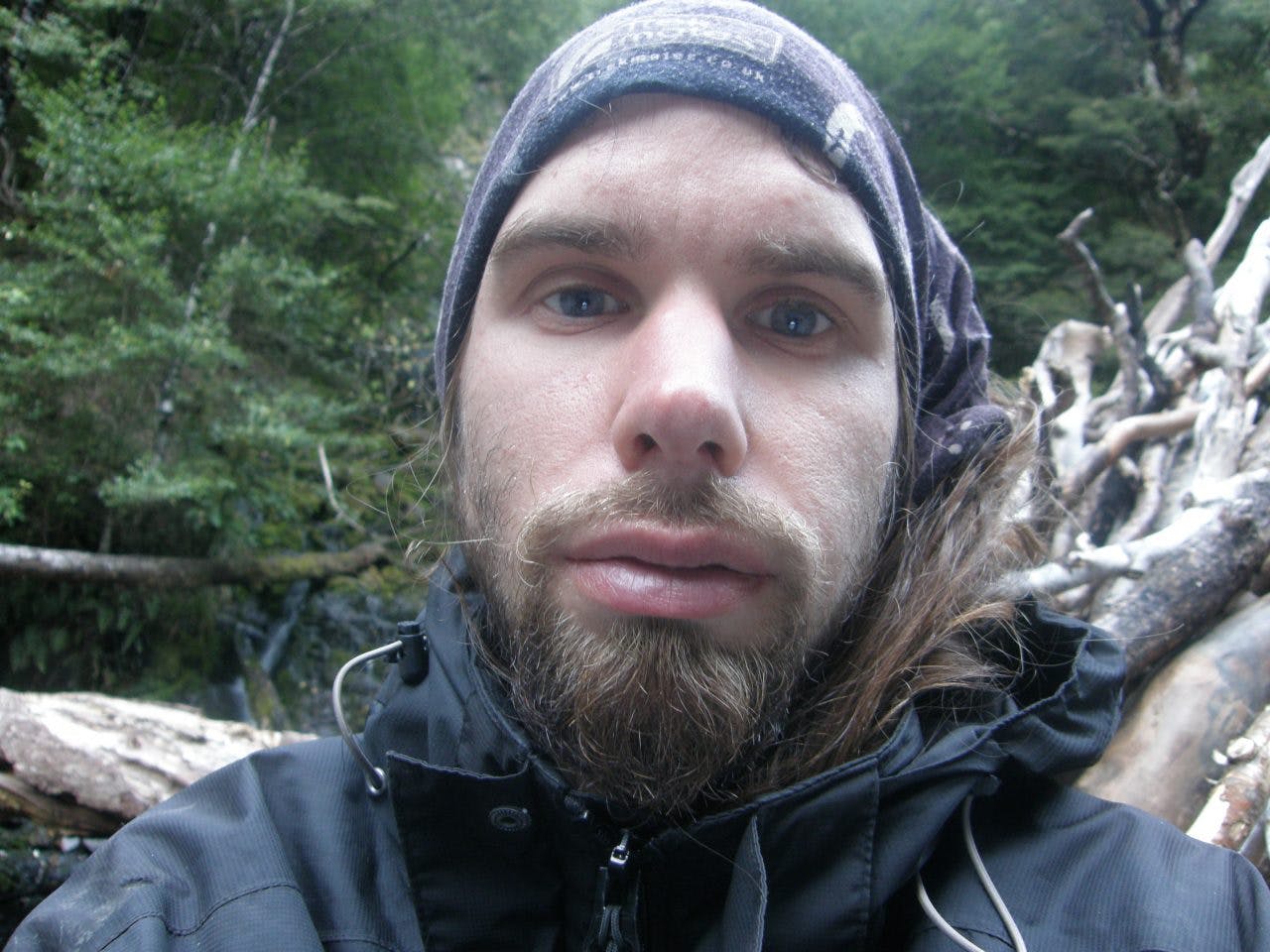An English tourist contemplates life and things left unsaid during a six day ordeal lost in Kahurangi National Park, by Josh Gale
James Esbester planned on going for a leisurely day walk, but six days later he found himself alone in the wilderness and writing farewell messages to friends and family. “I thought it would be terrible to go without people knowing how much I love them,” he says.
The tall, long-haired 30-year-old from Portsmouth in England was on a cycling holiday in New Zealand and was tramping in Kahurangi National Park in February. Taking only an emergency blanket, a compass and snacks for the morning, he made a day trip from Stone Hut to the summit of Mt Luna but became disorientated at the top and walked down the wrong side. “I spent some time admiring the view and somehow got myself turned around when I was up there,” says Esbester. “I should have been checking my compass a little more frequently.”
After descending the peak, he realised his mistake but rather than returning to the summit he thought if he followed a stream it would take him to his ascension point. When it didn’t, he followed old trail markers which he thought would lead him out, but the markers gradually became more and more difficult to find. “When I noticed the light was beginning to fade I started to panic a little,” he says. “I’ve spent quite a lot of time hiking around Europe, but I’ve never been out in the middle of nowhere with virtually no supplies, no tent, or anything to keep me warm overnight.”
He found a clearing to sleep in, close to the trail markers, and wrapped himself in his emergency blanket to stay warm.
The next day Esbester continued following the old trail, but it deteriorated as it cut deeper into the mountainside. Sometime around midday as he was coming down a steep ridge he lost his footing and fell three metres, cutting his arm open. “That was the moment I was most panicked as it was a messy wound on my wrist with quite a lot of blood,” says Esbester. He cleaned the wound in a stream, made a tourniquet out of his hair band and decided to stay in a small clearing to give the wound time to heal.
Esbester spent two nights there before trying to find more visible location for helicopters searching for him. “I figured they were my only chance. I didn’t have a locator beacon or any means of starting a fire or a torch to attract attention.”
His situation was further complicated by his lack of vision – Esbester had thrown away his contact lenses after three days of use so he could only see half a metre ahead. “I should have had a spare pair of glasses in my bag, but they were with the rest of my stuff back at the hut,” he says.
Esbester had left a note detailing his intentions in the hut log book and another note on his gear saying he would return by 1pm on the day he had set off. “It was quite hard putting all my faith in word having got out,” says Esbester.
However word had got out and about 100 people, including three dog teams, abseiling experts and a Defence Force helicopter, were searching for him.
On his fifth day lost in the wilderness, Esbester was becoming “seriously tired” and found walking across the clearing he had found a major effort. “It was getting colder and even with the emergency blanket it was very difficult to get any sleep at all. I didn’t have any hunger pains, but day by day I felt weaker and weaker.
“I had a few days to come to terms with my own my mortality,” he says. “It gave me a chance to reassess my priorities in life and to think especially about friends and family and how sad I was to be leaving things unsaid with a lot of them. I spent an entire day gathering my thoughts and writing in my notebook to express to those closest to me what they mean to me.”
On his sixth evening lost, the Defence Force helicopter found Esbester sitting on a rock next to a big ‘help’ sign he had made out of tree branches. “It was such a rush of emotion it’s hard to piece together much of the next hour,” says Esbester.
Paul Robinson from Nelson Search and Rescue was part of a dog team that spent two days looking for Esbester. He says a “simple loss of bearings” started Esbester’s woes and this could have been avoided by studying his location and using his compass properly. “Simple ‘on paper’ day walks are notorious for casual attitudes where a lack of provisions are taken because the intention is a short walk and not a long stay,” says Robinson. “However, this may be a reminder that despite the best intentions, things can and will go wrong.”
Once he realised he was lost, Robinson says Esbester should have “stayed put” because a helicopter was dispatched to find him two days after he was lost. Carrying a locator beacon would have seen Esbester picked up within an hour, says Robinson. And a cell phone would have also helped in areas with coverage and matches and mirror would have provided Esbester with means to signal passing air traffic.
Robinson says Esbester did two things right: firstly, he left a note of intention in the hut’s log book and another note on his gear. Even though he did continue on foot for too long, he eventually realised he needed to stay in one location easily seen from above.
Adds Robinson: “Travelling alone means a lack of other parties to contribute to good decisions. Once panic sets in the ability to focus and make good decisions is compromised.”
Key lessons
Nelson Search and Rescue volunteer Paul Robinson points out what we can learn from James Esbester’s experience.
- Leave notes of your intentions in hut log books
- Tell people / family where you are going and when you’ll be back
- Take sufficient clothing for all weather, even for a day trip
- Carry an emergency pack containing basic necessities including waterproof matches, a lighter, a chunk of rubber such as a piece of bicycle inner tube to start a fire with, emergency blanket, pocket knife, snack bars, and a pen and paper
- Have some form of knowledge about how to make a temporary shelter for yourself
- Remember that shelter / water / warmth are key factors in survival








